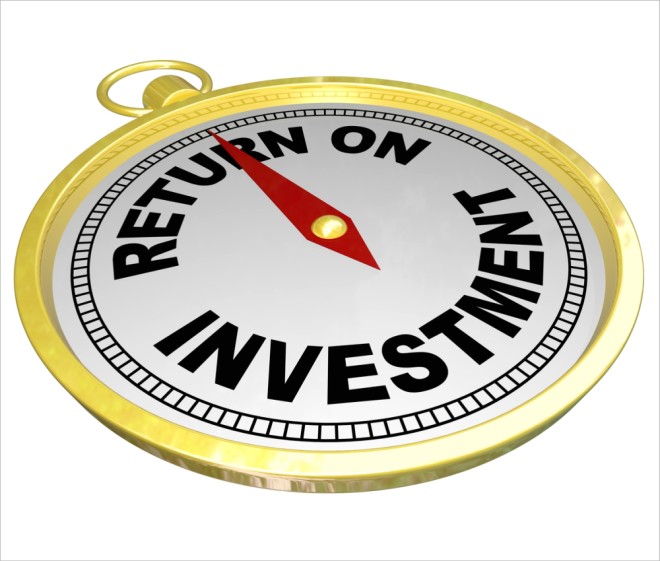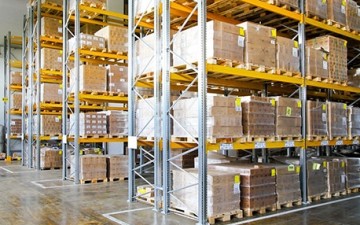Inventory Costs – Types, Examples, and Tips to Manage Them
Inventory costs make up a substantial part of any manufacturing or distribution company’s total expenses. But the purchase price is just the beginning—storage, handling, and opportunity costs add up fast. Getting a handle on these expenses directly impacts your bottom line, profit margins, and competitive position.

What are inventory costs?
Inventory costs are all the expenses you rack up when buying, storing, and managing your stock. Most people think it’s just what you pay your suppliers, but that’s only the starting point. You’ve got warehouse rent, staff wages, insurance, and the cost of having your money tied up instead of earning returns elsewhere. These all contribute to the financial health of your business.
The cost of inventory typically eats up between 28% and 30% of a company’s total assets. That’s a huge chunk of capital sitting in your warehouse instead of working for your business in other ways. When you’ve got that much money locked up in stock, it limits what you can do with cash flow—whether that’s investing in new equipment, paying down debt, or jumping on growth opportunities.
Why does this matter? Because inventory costs hit your profits from multiple angles. Poor inventory management drives up storage costs, but it also creates bigger problems. Run out of stock and you’re looking at production shutdowns, unhappy customers, and expensive rush orders to get back on track. Keep too much stock and you’re paying to store items that aren’t generating revenue.
The companies that get ahead are the ones that understand a simple truth: every item in your stockroom costs money every single day until it gets sold. From the day you purchase inventory until the day you sell it, those items keep costing you money. The businesses that stay profitable understand they can actually do something about these costs instead of just accepting them as part of doing business.
Inventory costs vs inventory costing
Let’s clear something up first because people get confused about this all the time. Inventory costs are the real money coming out of your pocket—rent, wages, storage fees, and the cost of having cash tied up in stock. Inventory costing, on the other hand, is an accounting method for how you value the cost of inventory on your financial statements using approaches like FIFO (first-in-first-out) and LIFO (last-in-first-out), or weighted average cost. We’re focusing on the real expenses that hit your cash flow, not the accounting techniques.
Different types of inventory costs
So where does your money actually go when you’re managing inventory? There are three main areas where costs pile up, and knowing about each one helps you find ways to save money.
Holding costs (carrying costs)
Holding costs, sometimes called inventory carrying costs, are everything you pay to keep inventory sitting in your facility. These expenses keep running whether your stock is moving fast or collecting dust, and they add up faster than most business owners realize.
Storage and facility costs form the foundation of your holding expenses. You’re paying warehousing rent, utilities to keep the lights on and climate control running, insurance to protect your investment, and security to prevent theft. If your products need special storage conditions—like temperature control for food or chemicals, or clean rooms for electronics – these costs climb even higher.
Labor makes up another significant chunk of holding costs. You need people to receive shipments, move products around, pick orders, manage the warehouse, and conduct inventory counts. Don’t forget the indirect labor costs either: the supervisors, inventory clerks, and maintenance staff who keep everything running smoothly.
Here’s something many businesses don’t think about—opportunity cost. All that money sitting in inventory could be working for you somewhere else. You could pay down debt, buy new equipment, or invest in growth. Instead, it’s just sitting there on shelves.
You’ve also got risk costs to consider. Products depreciate over time, some become obsolete before you can sell them, and others get damaged, stolen, or simply disappear due to record-keeping errors. Each of these situations turns profitable inventory into a loss.
Ordering costs (procurement costs)
Placing an order costs way more than just the product price. All kinds of expenses get triggered, and they add up fast if you’re placing lots of small orders instead of planning better.
The administrative work starts before you even order anything. Someone needs to determine what to buy, research suppliers, prepare purchase orders, get approvals, and handle all the paperwork. The average cost to process a single purchase order ranges from $50 to $150, and for some complex orders, it can reach $1,000 or more.
Shipping and logistics costs change based on who you buy from and how much you order at once. You might pay shipping charges, customs fees for international orders, and receiving costs when products arrive. Emergency orders carry particularly steep premiums – typically 30% to 70% above standard costs, and sometimes even double for truly urgent shipments.
Quality control adds another layer of expense. Someone needs to inspect incoming goods, test them if necessary, and handle any returns or rejections. These costs become especially significant when dealing with critical components or regulated products where quality issues could shut down your operation.
Shortage costs (stockout costs)
When you run out of stock due to low inventory levels, the real costs extend far beyond the obvious lost sale. Stockout costs can devastate your business in ways that don’t always show up clearly on your financial statements, making them particularly dangerous to ignore.
The immediate operational impact hits first. Production lines stop when they don’t have the materials they need, but you’re still paying for labor and overhead. In 2023, inventory distortion – which includes stockouts – cost retailers nearly $1.8 trillion worldwide, equivalent to 7.2% of all retail sales. When you need to get back in stock fast, you’re looking at emergency orders with premium pricing and expedited shipping that can inflate costs by 25% or more.
Customer relationship damage often proves more costly in the long run. When customers can’t get what they need from you, they’ll find someone who can deliver. Research shows that 91% of consumers are less likely to shop with a retailer again after a negative experience like a stockout. That’s not just a lost sale – it’s a lost customer relationship that might have generated revenue for years.
Your competitors pick up business while you’re trying to get inventory levels back up. Word gets around that you can’t deliver when people need you. Customers stop trusting that you’ll have what they need, and future sales take a hit. Customer demand plays a huge role in inventory decision-making.
How to calculate inventory costs
Getting a handle on your actual inventory costs means doing some math, but it’s not as complicated as it might seem. Here’s how to calculate the main cost categories.
- Holding costs are typically calculated as a percentage of your average inventory value. Most businesses see holding costs between 12% and 35% annually, with 25% being a common benchmark for retailers. To calculate yours, add up all your storage costs, labor, insurance, depreciation, and opportunity costs for the year, then divide by your average inventory value.
- Ordering costs are calculated per purchase order. Track everything that goes into placing orders – staff time, paperwork, approvals, receiving – for a month, then divide by the number of orders you placed. Most companies spend $50 to $150 per order, though complex purchases can hit $1,000 or more.
- Shortage costs are trickier because they include lost sales and customer relationships that are hard to quantify. Start with the direct costs – emergency orders, expedited shipping, idle labor during stockouts. Then estimate lost sales by tracking how often you turn customers away due to stockouts and multiply by your average order value.
The key is to track these numbers consistently so you can spot trends and see where your money is actually going.
Inventory cost examples
Understanding inventory costs in theory is one thing, but seeing how they play out in real businesses makes the numbers much clearer. Let’s examine three different types of companies to see how these costs affect them.
Manufacturing company example
Take a mid-sized manufacturer making industrial pumps. Their raw materials inventory includes steel, gaskets, and motors that sit in the warehouse for an average of 45 days before entering production. With $2 million in raw materials inventory, they’re paying about $500,000 annually in holding costs – warehouse or storage space rent, climate control for sensitive components, materials handling staff, and the 8% opportunity cost on tied-up capital. When they run short on critical parts like specialty motors, emergency orders cost them 50% more than planned purchases, plus production delays that idle their assembly workers. A single stockout on a key component last year cost them $75,000 in lost production time and rush shipping fees.
Distribution company example
A regional electrical distributor managing inventory across five warehouses faces different challenges. They stock 15,000 different SKUs ranging from basic wire nuts to expensive transformers, with total inventory valued at $8 million. Their holding costs run about 22% annually – $1.76 million – including multi-location storage, regional delivery trucks, and inventory management staff at each facility. The real pain comes from coordination problems between storage space locations. When their Dallas warehouse runs out of a popular breaker while Houston has excess stock, they’re looking at emergency transfers that cost $200 per shipment, plus the lost sales when customers can’t wait for internal moves.
Retail company example
A home improvement retailer with seasonal inventory swings shows how timing affects costs. During spring preparation, they carry $5 million in lawn and garden inventory, but by fall, 15% of that stock becomes dead inventory that has to be marked down 40% to clear. Their annual holding costs run about 28% of inventory value, but the real killer is obsolescence. Last year, they wrote off $180,000 in unsold seasonal items – patio furniture that went out of style and fertilizer that expired in storage. Each item that doesn’t sell costs them about 30% above purchase price in holding expenses before they finally clear it at a loss.
4 key factors that drive up inventory costs
A lot of things can drive up your inventory costs without you noticing until it’s too late. Catching these problems early gives you a chance to fix them before they really hurt your profitability.
1. Poor demand forecasting
Poor demand forecasting triggers a cascade of costly operational challenges:
- Creates a domino effect of expensive problems when you can’t predict what customers actually want.
- Leads to inventory imbalances with too many of some products and not enough of others.
- Excess stock ties up cash flow and eventually gets marked down or written off completely.
- Shortages force businesses into costly emergency orders that disrupt normal operations.
- Many businesses still rely on inadequate forecasting methods like gut feeling or outdated spreadsheets.
- These outdated approaches miss important seasonal patterns and market shifts that could improve planning.
2. Inefficient procurement practices
Inefficient procurement management wastes money in multiple ways:
- Placing frequent small orders instead of optimizing order quantities.
- Poor supplier relationships that don’t include volume discounts or favorable terms.
- Lack of coordination between departments leading to duplicate orders.
- Manual processes that increase ordering costs and create errors.
- Emergency purchasing at premium prices due to poor planning.
3. Inadequate inventory controls
Inadequate inventory control systems create blind spots that cost money. When you can’t see what you actually have in stock, you’re flying blind:
- Manual tracking methods prone to human error.
- No real-time visibility into stock levels across locations.
- Poor communication between sales, purchasing, and warehouse teams.
- Delayed or inaccurate inventory information leading to bad decisions.
- Inability to identify slow-moving or obsolete stock before it becomes a problem.
4. Supply chain disruptions
Supply chain disruptions have become more frequent and costly with significant financial impacts:
- Recent data shows that 94% of companies report negative revenue impact from supply chain issues.
- Disruptions typically inflate operating expenses by 3-5% across affected businesses.
- Sales typically decrease by about 7% when supply chain problems occur.
- Supplier failures represent one of the main causes of supply chain breakdowns.
- Cyber-attacks increasingly target supply chain vulnerabilities and create widespread disruptions.
- Weather-related delays force companies into reactive mode with expensive emergency solutions.
- These disruptions push businesses toward costly workarounds that strain budgets and operations.
The importance of tracking and managing inventory costs
Smart inventory cost management isn’t just about cutting expenses – it’s about freeing up cash and resources that can drive your business forward. Companies that get serious about tracking and controlling these costs often discover money they didn’t know they were losing.
The financial impact hits your business in several ways and even small changes can free up serious cash. Having the right finished goods when customers want it – without tons of excess inventory sitting around – gives you a real edge over competitors.
Better inventory control means you can pivot faster when the market changes and jump on new opportunities. Meanwhile, your competition is stuck dealing with too much of the wrong stuff or constantly running out of what customers actually want.
Smart inventory tracking becomes really important when supply chains keep getting disrupted. Good systems help you:
- See stockouts coming before they hit;
- Find slow-moving products while you can still do something about them.
- Figure out the right balance between safety stock and shortage risk.
- Make better choices about suppliers and backup plans;
- Fix problems fast instead of always playing catch-up.
When you know what inventory actually costs your business, you make smarter buying decisions. Instead of just looking at product prices, you can factor in storage, handling, and all the other real costs. This helps you negotiate better with suppliers and pick the right product mix for better profits.
Tips for reducing inventory costs
Reducing inventory costs isn’t about cutting everything – it’s about being smarter with what you’ve got. These strategies actually work and can save you real money.
- Get better at predicting what you’ll need. Look at your sales history, seasonal patterns, and market trends to figure out what you’ll actually sell. Even basic improvements in forecasting can cut planning mistakes in half. Talk to your sales people about upcoming promotions or big customer changes, and think about outside events that might affect what people buy.
- Optimize your ordering patterns. Instead of placing orders whenever you think of it, establish reorder points based on actual usage patterns and lead times. Consider consolidating orders to get volume discounts and reduce administrative costs. The goal is finding the sweet spot between ordering costs and holding costs.
- Speed up inventory turnover. Focus on moving products faster through better sales processes, promotional strategies, and inventory rotation. Companies with higher turnover rates tie up less cash and reduce the risk of obsolescence. Track which products are slow movers and develop strategies to either move them faster or stop carrying them.
- Strengthen supplier relationships and terms. Work with key suppliers to improve delivery reliability, negotiate better payment terms, and explore vendor-managed inventory arrangements where appropriate. Consider leveraging extended payment terms that improve your cash flow, volume discounts for consolidated orders, or more frequent, smaller deliveries to reduce your carrying costs.
- Streamline your warehouse operations. An organized warehouse reduces labor costs and speeds up order fulfillment. Optimize the layout for efficient product flow and picking, and implement standard operating procedures for receiving and shipping. Also, cross-training staff should be considered for flexibility during busy periods, and regular maintenance should be conducted to prevent breakdowns.
- Get some technology to help. Barcode systems and inventory management software get rid of tons of manual work and screw-ups. About 65% of companies use barcode scanners now because they’re way more accurate, and 59% say they lose less stuff after getting them (PDA Barcode Scanner Market Trends & Report, Global Growth Insights, 2025). Barcodes mean way less typing and way fewer mistakes when you’re checking stuff in, picking orders, or counting what you have. Scanners and labels pay for themselves pretty fast—usually just a few months—because everything works better.
- Take a methodical approach. Consider Just-in-Time inventory management, which means only ordering what you need right now. It keeps your storage costs down, but you need suppliers who don’t screw up and steady customers who buy pretty regularly. Economic Order Quantity helps you figure out how much to order at once – order too little and you waste money on admin stuff, order too much and your cash just sits there. Or adopt ABC analysis to identify and easily prioritize high-value, fast-moving items over less critical ones.
- Look at your inventory every month. Check for stuff that’s not moving, getting old, or causing headaches. Instead of stopping everything for one big count, try cycle counting – count different spots on different days. This keeps things accurate without messing up your daily work, and you catch expensive problems early. Fix problems when you see them instead of letting them eat your profits.
How inventory management software keeps inventory costs in check
Inventory management software like MRPeasy can totally change how you deal with these total inventory costs. Most of the time, it pays for itself pretty quickly because you stop wasting so much money. You’ll see the results almost immediately in your balance sheets. Here’s how it fixes the biggest problems.
Inventory tracking
You can see what you’ve got everywhere, all the time. No more guessing games or getting caught off guard when customers want something you’re out of. The system gives you a heads up when you’re running low so you can order more before trouble.
You also know exactly where everything went thanks to a full digital paper-trail helping you figure out consumption patterns and simplifying returns or compliance. Most companies lose way less after they start tracking their stock, from beginning inventory levels to ending inventory.
Orders move faster
Orders get done faster because the system automates all the paperwork and tells people the smartest way to pick stuff. When it knows where everything is and makes good lists, warehouse people spend less time looking around and more time getting orders out if they have a good inventory management system.
Hooked up to your sales, as in integrated ERP systems, and inventory levels update in real time when orders go out. No more selling stuff you don’t have or dealing with ticked-off customers. Fast delivery lead times keep people happy and stop inventory from just sitting around burning money.
Less junk and waste
The system tells you when stuff is getting old or hasn’t moved in forever, so you can do something before it becomes worthless. Early warnings give you time to have sales, move things around, or send them back.
Forecasting further looks at what you actually sold and seasonal stuff, providing a data-based prediction on what you’ll really need. Tracking market fluctuations means less guessing that makes you order too much. Good forecasting cuts planning mistakes significantly, so you don’t have as many dead inventory items taking up space.
Right amounts and auto-ordering
Smart math figures out lead times, how much demand bounces around, and seasonal patterns to tell you the right stock levels. Instead of ordering based on gut feelings or old rules that no longer work, the system tells you exactly when and how much to order.
Auto-ordering means you won’t forget to reorder important stuff. It also helps you balance ordering costs with storage costs. Companies using this stuff keep the right stock levels 94% of the time and cut emergency orders by 62% (Real-Time Inventory Management: Reducing Stockouts and Overstocks in Retail, ResearchGate, 2024).
Supplier performance tracking
You get the real deal on delivery times, quality problems, and pricing so you can pick better suppliers. When you can see which suppliers always deliver and which ones are a pain, you can adjust your safety stock and backup plans.
Electronic communication with suppliers cuts way down on paperwork and makes everything more accurate. Better relationships with suppliers usually mean better payment deals and discounts.
When you have accurate, up-to-date inventory data, it’s easier to make informed decisions about handling costs and use an inventory cost formula that makes sense and helps optimize your profitability.
Key takeaways
- Inventory costs are the total expenses tied to purchasing, storing, and managing stock—including holding, ordering, and shortage costs—not just the price of goods from suppliers. These can account for up to 30% of a company’s assets.
- There are three main types of inventory costs that each impact the bottom line differently: holding costs, ordering costs, and shortage costs.
- Many businesses underestimate hidden inventory costs like opportunity cost, obsolete stock, and labor inefficiencies. These often go unnoticed but have a significant impact on long-term financial performance.
- Inventory costs often rise due to poor demand forecasting, inefficient procurement, weak inventory controls, and supply chain disruptions. Identifying and fixing these early can prevent profit erosion.
- Inventory software helps control inventory costs by automating stock tracking, streamlining purchases, and optimizing production. Tools like MRPeasy help maintain optimal stock levels while minimizing cost and risk.
Frequently asked questions
Inventory costs are typically divided into three parts: holding, ordering, and shortage costs. Holding costs are calculated as a percentage of average inventory value—usually around 20–30% annually. Ordering costs are tracked per purchase order, while shortage costs are estimated based on lost sales, emergency orders, and downtime.
Start by improving demand forecasting and tracking what you actually sell. Even simple inventory management software or spreadsheets can help identify slow-moving stock and avoid over-ordering. Focus on small, consistent improvements rather than a full overhaul right away.
Inventory keeping costs—also called holding or carrying costs—include warehousing rent, utilities, insurance, labor, depreciation, obsolescence, shrinkage, and opportunity cost. These are the day-to-day expenses of storing and maintaining unsold inventory.
You may also like: What Is Vendor-Managed Inventory and How to Implement It?




